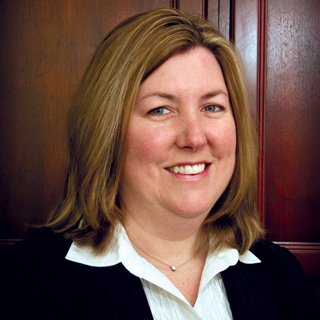
New regulations from Medicare. More demands from hospitals. Combine these with the ever-present goal of successfully serving each client who trusts us with their care, and it is getting more and more important to effectively manage risk and improve patient outcomes in a sub-acute care setting.
Every person who comes in to our communities comes with unique risks — his or her own combination of medical history, conditions and medications. We want to manage those risks — our goal (and their goal!) is to get them home. Falls, wounds, and other negative events could delay that return home, and also affect patient and family satisfaction.
At Providence, we want to do whatever we can to increase safety, successful rehab, and patient satisfaction. We offer a high level of post-acute care, and admission patterns demonstrated a growing need for that kind of care. With this growth, we saw an opportunity to further implement technology that assists staff in their daily efforts to keep patients safe and healthy. We’ve invested in the Bionic Leg to assist with rehab, and EarlySense to help us monitor post-acute patients who are not in the therapy gym.
EarlySense is a system for monitoring patients while they are in bed. It provided an opportunity for us to look more closely at patients’ patterns of movement, which could have an impact on fall prevention and wound prevention.
In the past, we had used bed alarms for safety precautions, but they can only tell you if someone is already out of bed, and often, they have already fallen. We wanted to take preventative measures, and we thought that EarlySense could help provide that. It also assists us in preventing other issues — EarlySense has been able to come alongside our nurses and assist in wound prevention. The system alerts caregivers when a patient hasn’t changed positions in bed. In combination, these two elements have provided our staff with additional knowledge about their patients that they would not have had otherwise.
We use EarlySense primarily for falls and wound care, but there are other benefits as well — for example, wire-free heart rate monitoring. This capability is unobtrusive to the patient and has already proven helpful for our staff. We had one patient whose monitor was reporting an irregular heart rhythm. She was alert and oriented, and insisted that she felt fine. But when our nurses investigated further, they determined there were indeed irregularities, signaling a more dangerous health event was possible. We were able to transfer the patient to the hospital for further treatment because of this early detection. The patient later returned, feeling thankful and secure knowing that this additional monitoring was in place. If we were not using EarlySense, that heart rhythm wouldn’t have been detected in a patient that otherwise looked and felt fine.
We’ve had the system since January 2015, and have seen a general decline in falls on the post-acute care wing, relative to other areas of our community. Likewise, our quality measures for new or worsening pressure ulcers are well below the state average, and lower than the national average as well.
Certainly there are other factors that go into these numbers – census, frailty of patients, and the experience that staff have in using the system. We have found that continual training on the use of the system is essential to the success of the technology.
Overall, EarlySense demonstrates the way that technology and talented, high-quality staff can work together to lower risks and improve outcomes for sub-acute care patients, getting them back to full independence as soon as possible.
Johanna Zandstra has been the Compliance Officer at Providence Life Services for more than 16 years. She is a Licensed Nursing Home Administrator, and a Certified Professional in Aging Services Risk Management. Providence is a not-for-profit, full-spectrum senior living ministry with communities in Illinois, Michigan and Indiana.



